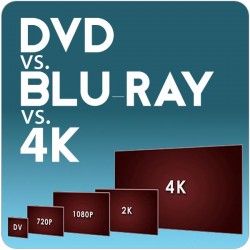Weekly News Roundup (22 December 2013)
With Christmas and New Years just around the corner, this may very well be the last full (-ish) WNR for 2013, as I don’t expect there to be a lot of news in the next week or so. Not that there was much this week, but there will be even less next week. A nice break before things get back to normal in January.
Here goes.
![]()
So that’s three more domain names off of the list for The Pirate Bay, as the torrent search engine went on a South Atlantic and South American trip to find a new home, before settling for good old Sweden. The Ascension Island proved to be no more hospitable for the Pirate Bay than Peru or Guyana, as domain seizures quickly followed in all three places.
The Pirate Bay’s latest sojourn started when its .SX domain named was seized by Dutch authorities at the behest of anti-piracy agency BREIN. With the .SE domain name threatened with a similar fate since April, TPB wasted no time in trying to find a new friendly port, but to no avail. For now, TPB is back in Sweden’s SE domain name, which won’t be seized until a court order forces it to be.
It’s obvious that TPB’s current domain strategy isn’t working, although it may not need one as urgently if its BitTorrent based PirateBrowser is ever released, and things like web hosting and domains names all become decentralized.
![]()
Sony’s changed tact of focusing less on the multimedia aspect of their flagship gaming console, and more on gaming, seems to be paying dividends for them in terms of sales. But for those like me that had their PS3 as a hub for their home entertainment needs, the PS4’s missing media features has been a bit of a disappointment. And the disappointment continues as one of the first professional disc performance benchmarks has the PS4 failing to tick many of the required boxes in terms of video performance, to the point where it’s a poorer Blu-ray player than most standalones. And the PS3!
The PS4’s lousy deinterlacer is to blame, further compounded by the lack of 1080i output. The lack of 2:2 cadence detection for PAL films also means that it’s not a very good DVD player either, at least for those in PAL regions (like most of Europe, Asia and here in Australia). It’s probably not something that anyone other than eagle-eyed home theater nerds will notice, but for $400, and considering the close relationship between Sony and Blu-ray, as well as the PS3’s disc playing pedigree, it’s still disappointing. A lot of the problem may be fixed via software at a later time, but this is not like the PS3 when it was first launched and when Blu-ray was still a new format – this is something Sony should have gotten right the first time round.
At least it’s more tolerable, at least in my opinion, than the Xbox One’s 50Hz bug (where 50Hz content is converted, poorly to 60Hz). If there’s one thing I cannot stand it’s judder. And it’s harder to forgive Microsoft for this problem, considering their marketing of the Xbox One as an “all-in-one” media powerhouse. Had Microsoft actually did what their marketing said, and released a perfect Blu-ray/DVD player with Blu-ray 3D support out of the box, it would have been a great selling point for those that do actually want an all-in-one machine. But right now, neither systems are worthy of a recommendation purely based on their media capabilities, great game consoles they may be.
——
I think I’ve mentioned here before that H.265, or HEVC, seems to be the perfect fit for online based 4K content delivery. HEVC was made for 4K, and this may actually be literally true. It seems to be the codec, absent a huge jump in progress for super fast broadband rollout around the world, that the Internet needs right now to help ease video data induced net congestion. So no surprises then that Netflix is considering HEVC for their 4K streaming launch in 2014.
And even if you’re not interesting in 4K, Netflix says that once the HEVC codec matures, it’s conceivable that all of Netflix’s existing content, even those in standard def, will be delivered via HEVC in the future. This could mean Super HD streams that require less bandwidth, and still manage to maintain or improve upon their current quality. The only problem in the way of total HEVC adoption could be the processing power of older devices, not great enough to handle the increasing demand of HEVC decoding, which is estimated at between two and three times that of your typical H.264 AVC decoder.
That’s it for this WNR. Merry Christmas and Happy Holidays from everyone here at Digital Digest.



